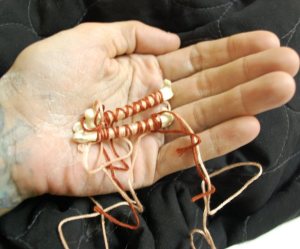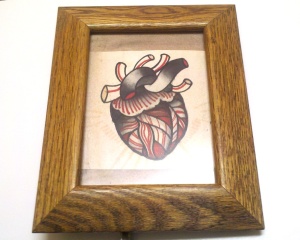How to choose a tattoo design when you're completely clueless
 It can be hard to commit to one image that will be permanent. Some people just have too many ideas! Here are some ways you can decide what to get tattooed…Subject, style, and placement.
It can be hard to commit to one image that will be permanent. Some people just have too many ideas! Here are some ways you can decide what to get tattooed…Subject, style, and placement.
- Find an image or subject that you like. If you don’t have any very specific ideas or you can’t find something you want to commit to permanently, abstract art is always an option. Simple, flowing shapes work very well on the human form, hence the popularity of “tribal” tattoos. You can even be as vague as wanting a shape, or a curve tattooed on you. “Abstract” means just that- there is no subject matter, and the meaning is obscured. This is a good choice if you’re indecisive or change your opinions from time to time.
- Placement is important. Do you want to be able to see your tattoo? Then get it on the front half of your body. Would you like to be able to easily hide it? Get it on the thigh, or back, or calf (if you can wear knee socks). Do you want it to be a teaser? Get it so that part of it extends beyond the sleeve of your t-shirt from your upper arm. The easiest paces to get work done, and the best for long-term wear and tear, are the outside of the calf and thigh, the inside of the forearm, the outside of the upper arm, and the upper back. The most important thing though? Is where YOU want to see the tattoo. The pain only lasts a short time, but you will be looking at the tattoo itself forever.
- Abstract art works well too because you can invent new meaning or significance for the tattoo as you get older. Getting something that is pure decoration can save you the trouble of trying to commit to one point of view or meaning. Most tattoo artists enjoy doing some abstract work; just be sure the artist you choose works in the style you enjoy seeing. (more on this below!)
- When seeking subject matter, keep an open mind. Look at tattoo magazines and imagine yourself as the people in the pictures. What would feel right for you? What can you relate to? Look at photographs and paintings that aren’t tattoo-related and imagine them on your skin, instead of on paper or canvas. Would it look right to you? If you have hobbies, think about whether there are objects or images that express them. If you have inside jokes with friends or loved ones, think of ways to express them with images. Getting matching images is usually not a jinx on a relationship the way getting a tattoo of someone’s name can be. Does your child have a favorite toy, or a nickname? Does your wife have a favorite flower? You can get her a bouquet, or memorialize this time in your child’s life, by tattooing it on you.
- If it’s a tattoo for a relative, “Mom” or “Pop”, think about what kind of images they enjoy, and what their personality is like. Memorial tattoos and relationship tattoos, just like gifts, mean more if they are personal to the receiver.
- Don’t feel hedged in to what you have already seen as a tattoo. The tattoo industry has expanded in technique and equipment rapidly in the last ten years or so, and besides being safer (with disposable equipment and such) the artistic possibilities are close to endless. While not every design can be applied as-is, usually a few modifications can make it possible to do just about anything on skin. Look to all forms of art and photography for ideas and styles to apply to your tattoo.
- Try to find your inspiration in your own taste and interests. If you like art nouveau vases, use them as reference. If you like wild animals, find some photographs of animals you find meaningful. Or simply look for shapes, motifs, and colors that you like.

 As a tattoo artist, and as someone who’s had to remove a few unsightly tatoos, I can tell you that, unfortunately, it’s going to hurt. And it’s going to cost money.
As a tattoo artist, and as someone who’s had to remove a few unsightly tatoos, I can tell you that, unfortunately, it’s going to hurt. And it’s going to cost money.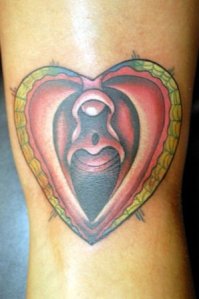 Laser treatment has become less expensive and more accessible in general in the last few years. A half hour session now may only cost about the price of the tattoo. Multiple sessions to completely remove a tattoo can become pricey after a while, but for some people it’s worth it.
Laser treatment has become less expensive and more accessible in general in the last few years. A half hour session now may only cost about the price of the tattoo. Multiple sessions to completely remove a tattoo can become pricey after a while, but for some people it’s worth it. Pain is defined as an unpleasant sensation. Most people avoid pain at all costs. Tattoos do hurt- but not in the way you’d think.
Pain is defined as an unpleasant sensation. Most people avoid pain at all costs. Tattoos do hurt- but not in the way you’d think.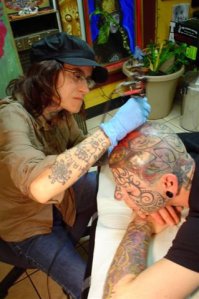 The endorphin rush associated with getting tattooed, or with running marathons, is notorious for becoming addictive. It is the same internal reaction that’s mimicked by the drugs ecstasy and morphine, among others.
The endorphin rush associated with getting tattooed, or with running marathons, is notorious for becoming addictive. It is the same internal reaction that’s mimicked by the drugs ecstasy and morphine, among others. Good tattoos are not cheap: cheap tattoos are not good.
Good tattoos are not cheap: cheap tattoos are not good.  Since most tattoo artists do not have health insurance, workmens’ comp, or any standard paycheck, and since they do not get to keep the majority of the price of the tattoo, tips are always appreciated. Tips can range anywhere from five to twenty percent; depending on the difficulty of the tattoo, your ability to sit still, and the service you felt you received. A large, difficult tattoo that you could not sit still for, during which you wiggled, cried, and made the artist pause, and during which the artist was polite and entertaining to you, represents a situation in which you should tip very well. Industry standard ranges from 5% (for a huge tattoo) to 20% (for smaller pieces).
Since most tattoo artists do not have health insurance, workmens’ comp, or any standard paycheck, and since they do not get to keep the majority of the price of the tattoo, tips are always appreciated. Tips can range anywhere from five to twenty percent; depending on the difficulty of the tattoo, your ability to sit still, and the service you felt you received. A large, difficult tattoo that you could not sit still for, during which you wiggled, cried, and made the artist pause, and during which the artist was polite and entertaining to you, represents a situation in which you should tip very well. Industry standard ranges from 5% (for a huge tattoo) to 20% (for smaller pieces). Tattoos, just like a fur or a pair of old favorite boots, require some care to stand the test of time.
Tattoos, just like a fur or a pair of old favorite boots, require some care to stand the test of time.
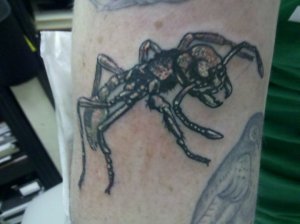 There are a lot of younger people today who are very interested in tattoos. In many cultures tattoos are used as a rite of passage from youth to adulthood, and in our Western culture it is no different. The lack of culturally-based rites of passage and tests of maturity leads many teenagers to seek alternate forms of self-challenge, and tattooing is currently high on that list.
There are a lot of younger people today who are very interested in tattoos. In many cultures tattoos are used as a rite of passage from youth to adulthood, and in our Western culture it is no different. The lack of culturally-based rites of passage and tests of maturity leads many teenagers to seek alternate forms of self-challenge, and tattooing is currently high on that list. In addition, a home environment contains many bacteria and other germs that could infect a fresh tattoo. Lack of proper knowledge about cross-contamination and bloodborne pathogens can put kids at serious risk when they get tattooed in a home environment.
In addition, a home environment contains many bacteria and other germs that could infect a fresh tattoo. Lack of proper knowledge about cross-contamination and bloodborne pathogens can put kids at serious risk when they get tattooed in a home environment. I don’t care if you are getting a “cool” tattoo. I don’t care if you know the etiquette or not.
I don’t care if you are getting a “cool” tattoo. I don’t care if you know the etiquette or not.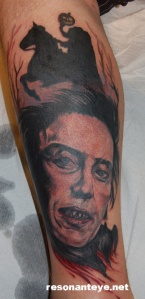 I’m not a nurse or very good at babying people, but I’m willing to talk you through all the things you’re not sure about. I mean, I do have hard days or bad days. Of course, I’m human. But my worst day as a tattoo artist? Is better than my best day ever, before I was one. So I’m not going to freak out on you. I love my job and you are the job. You know?
I’m not a nurse or very good at babying people, but I’m willing to talk you through all the things you’re not sure about. I mean, I do have hard days or bad days. Of course, I’m human. But my worst day as a tattoo artist? Is better than my best day ever, before I was one. So I’m not going to freak out on you. I love my job and you are the job. You know?